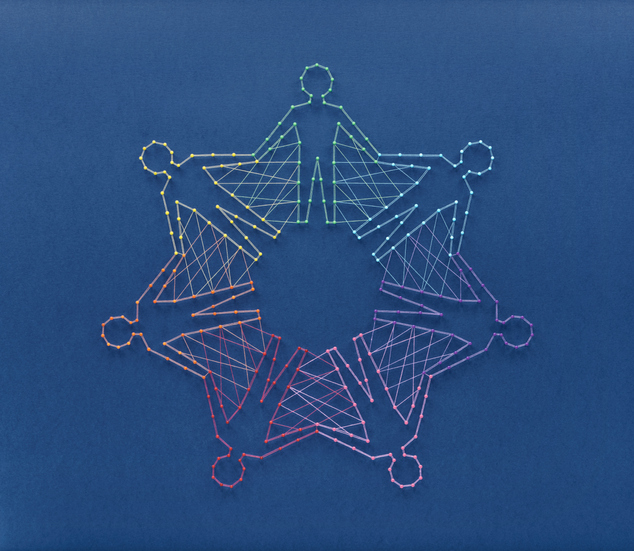References
American Psychological Association. (2020, June). Common caregiving problems. American Psychological Association. Retrieved October 22, 2021, from https://www.apa.org/pi/about/publications/caregivers/practice-settings/common-problems.
American Senior Communities. (2015, October 14). The challenges facing a family caregiver: ASC blog. ASC. Retrieved October 22, 2021, from https://www.asccare.com/the-challenges-facing-a-family-caregiver/.
Boardman, S. (2020, February 4). The importance of developing a sense of belonging. Life Skills Group. Retrieved October 22, 2021, from https://www.lifeskillsgroup.com.au/blog/belonging#:~:text=A%20sense%20of%20belonging%20is,sense%20of%20purpose%20and%20meaning.&text=Humans%20have%20an%20instinctive%20need,an%20increased%20level%20of%20survival.
Chaney, A. (2018, November 14). Challenges faced by caregivers. Griswold Home Care. Retrieved October 22, 2021, from https://www.griswoldhomecare.com/blog/2018/november/challenges-faced-by-caregivers/.
Doran, J. (2014, April). The unspoken truth about self-care. American Psychological Association. Retrieved October 22, 2021, from https://www.apa.org/gradpsych/2014/04/corner.
eFamilyCare. (2019, September 5). 5 challenges caregivers face: Efamilycare. Advice For Caregivers. Retrieved October 22, 2021, from https://efamilycare.com/articles/caregiver-challenges/5-challenges-caregivers-face/.
Family Caregivers of British Columbia. (2020, June 29). Part 2: How to set boundaries as a caregiver. Family Caregivers BC. Retrieved October 22, 2021, from https://www.familycaregiversbc.ca/community-resources/part-2-boundaries/.
FirstLight Home Care. (2019, November 7). The biggest challenges facing family caregivers. FirstLight Home Care. Retrieved October 22, 2021, from https://www.firstlighthomecare.com/blog/2019/11/07/the-biggest-challenges-facing-family-caregivers/.
Gomez, A. (2020, May 25). Humans ‘not meant to be alone’: Many Americans haven’t seen or touched another person in 3 months because of COVID-19. The Register Guard. Retrieved October 22, 2021, from https://www.registerguard.com/zz/news/20200525/humans-not-meant-to-be-alone-many-americans-havent-seen-or-touched-another-person-in-3-months-because-of-covid-19.
Graves, G. (2019, November 21). 5 common challenges care-givers face, and how to handle them. Health.com. Retrieved October 22, 2021, from https://www.health.com/mind-body/caregiver-self-care.
International Alliance of Carer Organizations. (2021, June). Global State of Caring. https://internationalcarers.org/. Retrieved October 22, 2021, from https://internationalcarers.org/wp-content/uploads/2021/07/IACO-Global-State-of-Caring-July-13.pdf.
Monroe, C., Loresto, F., Horton-Deutsch, S., Kleiner, C., Eron, K., Varney, R., & Grimm, S. (2020). The value of intentional self-care practices: The effects of mindfulness on improving job satisfaction, teamwork, and workplace environments. Archives of Psychiatric Nursing, 35(2), 189–194. https://doi.org/10.1016/j.apnu.2020.10.003
Own Your Health. (2017, October 4). 3 challenges caregivers face – and how to conquer them. Own Your Health. Retrieved October 22, 2021, from https://www.ownyourhealthwa.org/caring-for-others/3-challenges-caregivers-face-and-how-to-conquer-them/.
Therapist Aid LLC. (2016, April 29). Communication techniques (guide). Therapist Aid. Retrieved October 22, 2021, from https://www.therapistaid.com/therapy-guide/communication-techniques.
Wei, H. (2020). The power of self-care: An ENERGY model to combat clinician burnout. American Nurse Journal, 15(10), 28–31.
Workplace Options helps employees balance their work, family, and personal needs to become healthier, happier, and more productive, both personally and professionally. The company’s world-class employee support, effectiveness, and wellbeing services provide information, resources, referrals, and consultation on a variety of issues ranging from dependent care and stress management to clinical services and wellness programs. To learn more visit www.workplaceoptions.com.
Disclaimer: This document is intended for general information only. It does not provide the reader with specific direction, advice, or recommendations. You may wish to contact an appropriate professional for questions concerning your particular situation.



































